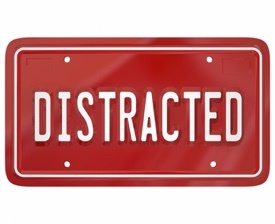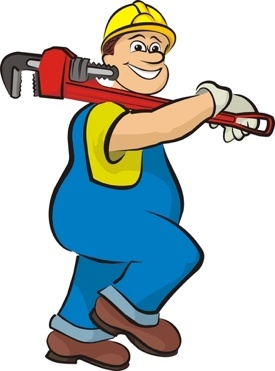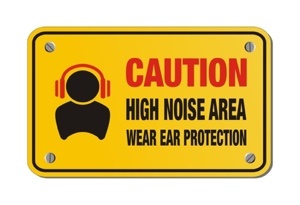 Every day, thirty men and women across the United States are severely injured in work-related accidents. That amounts to over ten thousand workers each year who are hurt so critically that the consequences to themselves and their families are sometimes permanent. Clearly, many U.S. worksites have been hazardous to workers. Reducing workplace hazards is good for employees and a smart way to reduce workers compensation insurance claims and costs.
Every day, thirty men and women across the United States are severely injured in work-related accidents. That amounts to over ten thousand workers each year who are hurt so critically that the consequences to themselves and their families are sometimes permanent. Clearly, many U.S. worksites have been hazardous to workers. Reducing workplace hazards is good for employees and a smart way to reduce workers compensation insurance claims and costs.
Until last year, the Occupational Safety and Health Administration (OSHA) was not receiving timely information about where and how most of those injuries were happening. Then, on Jan. 1, 2015, a requirement took effect that compelled employers to report to OSHA, within 24 hours, any severe work-related injury, such as amputation, in-patient hospitalization, or loss of eye.
The new requirement should enable the agency to target their compliance assistance and enforcement efforts to the areas where workers are at greatest risk. It should also help to engage more high-hazard employers in identifying and eliminating serious risks.
Some interesting findings from the requirement
After one year of the reporting program, employers had notified OSHA of 10,388 incidents involving severe work-related injuries, inclding 7,636 hospitalizations and 2,644 amputations
Not surprisingly, nearly one-half of the hospitalizations and about two-thirds of the amputations occurred in companies from the manufacturing and construction sectors.
The industry groups with the most severe-injury reports were:
- Building exterior contractors (391)
- Building equipment contractors (343)
- Support activities for mining such as drilling oil and gas wells (323)
- Non-residential building construction (271)
According to an OSHA report on the findings, most of the hazards that led to these severe injuries are well-understood and easily prevented. And they also account for a majority of work-related fatal injuries. In most cases, employers can stop these injuries and deaths with some clear-cut and cost-effective changes, including providing fall protection equipment, installing guarding over dangerous machinery, and clearly marking pathways.
Failure to report a workers comp insurance claim can be expensive
After one year of the requirement, OSHA concludes that, based on injury claim numbers for workers’ compensation, there has been some serious underreporting of severe injuries—possibly as much as 50%. To discourage this, OSHA has said that it is more likely to cite businesses for non-reporting, and it is raising the penalty for not reporting a severe injury from $1,000 to as high as $7,000. While these penalties pertain to many small and mid-sized companies that may not even be aware of the new reporting requirements, the penalty can be even more costly if OSHA discovers that an employer intentionally and willfully chose not to make a timely report.
A safe working environment is smart for business
A better way to avoid severe injury reporting is to avoid the injury. A safe workplace should be every company’s goal. Without it, businesses faces higher workers’ compensation insurance costs, loss of employees from potentially severe accidents, and an increase in liability exposure. A safe working environment, on the other hand, saves money by reducing workers’ compensation insurance claims, and it gives OSHA fewer reasons to launch an on-site inspection of a facility—a potential money saver in itself.
Contact Us for Help in Reducing Workers Comp Insurance Costs
 If you want to discuss how your business can maintain a safe worksite or if you would like to lower your workers compensation insurance premiums, contact American Insuring Group online or call us at (800) 947-1270 or (610) 775-3848.
If you want to discuss how your business can maintain a safe worksite or if you would like to lower your workers compensation insurance premiums, contact American Insuring Group online or call us at (800) 947-1270 or (610) 775-3848.



 Many
Many  For more information about workers compensation insurance,
For more information about workers compensation insurance,  Opioid use and misuse by workers has become a major concern for employers and their workers’ compensation managers.
Opioid use and misuse by workers has become a major concern for employers and their workers’ compensation managers.
 Problems can occur when workers covered by Medicare Advantage Plans sustain workers compensation injuries and use the plan to pay for medical care.
Problems can occur when workers covered by Medicare Advantage Plans sustain workers compensation injuries and use the plan to pay for medical care.  We Can Help
We Can Help Return-To-Work programs are instrumental in enticing employees out on a workers’ compensation claim to come back to work. Many employers struggle to manage and fill the void that is left behind when a worker is out; however, a solid Return-To-Work program will encourage employees to return to work quickly (once they are cleared to do so by a medical professional of-course), thereby contributing to lower
Return-To-Work programs are instrumental in enticing employees out on a workers’ compensation claim to come back to work. Many employers struggle to manage and fill the void that is left behind when a worker is out; however, a solid Return-To-Work program will encourage employees to return to work quickly (once they are cleared to do so by a medical professional of-course), thereby contributing to lower 
 We'll Help You Save on Workers Compensation Insurance
We'll Help You Save on Workers Compensation Insurance Hearing loss may be a compensable work injury leading to increased
Hearing loss may be a compensable work injury leading to increased  Over 4,000 employees are injured, and another 325 die each year in workplace electrical accidents. Do not let this be one of your employees! Protect your employees and minimize your workers compensation insurance costs through proper safety procedures.
Over 4,000 employees are injured, and another 325 die each year in workplace electrical accidents. Do not let this be one of your employees! Protect your employees and minimize your workers compensation insurance costs through proper safety procedures. Employees who are injured on the job may be entitled to compensation for medical care and wage replacement through their employer’s
Employees who are injured on the job may be entitled to compensation for medical care and wage replacement through their employer’s For construction workers and others whose jobs require them to be outside, winter means a few months of extreme cold and challenging days, during which they will be susceptible to cold-related injuries.
For construction workers and others whose jobs require them to be outside, winter means a few months of extreme cold and challenging days, during which they will be susceptible to cold-related injuries. Click here to contact us
Click here to contact us



